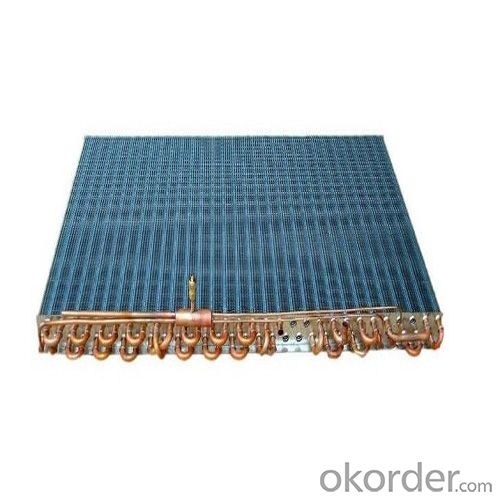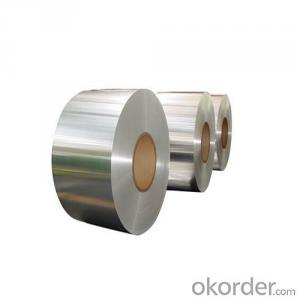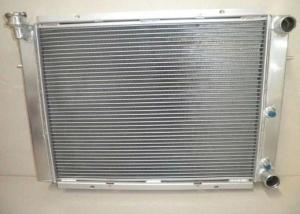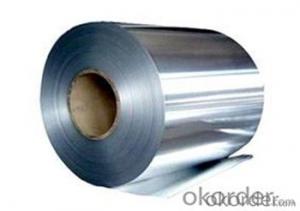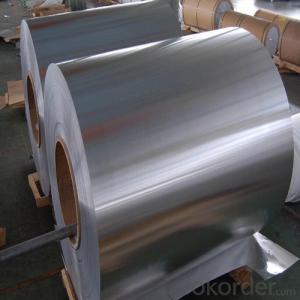Rheem Aluminum Coils - Aluminum Radiator Heating Fins Coil with Best Price
- Loading Port:
- Shanghai
- Payment Terms:
- TT OR LC
- Min Order Qty:
- 5 m.t.
- Supply Capability:
- 10000 m.t./month
OKorder Service Pledge
OKorder Financial Service
You Might Also Like
Specification
1.Structure of Aluminum Radiator Heating Fins Coil Description:
Alloy Aluminium Plate 1200 is widely used in the strength requirements of the product. Products commonly used in signs, billboards, building exterior decoration, bus body, high factory wall decoration, kitchen sink, lamp, fan, electronic components, chemical apparatus, sheet processing, deep drawing or spinning hollow ware, welding parts, heat exchangers, Bell surface and plate, plates, kitchen utensils, accessories, safety equipment and other.
2.Main Features of Aluminum Radiator Heating Fins Coil:
PVC Protect Film
Waterproof paper
High Quality
Competitive Price
3. Aluminum Radiator Heating Fins Coil Images:

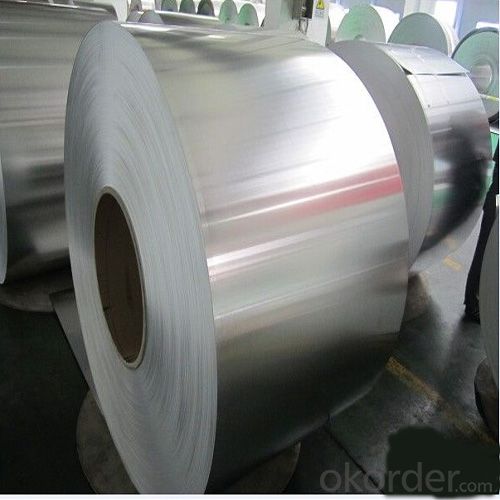
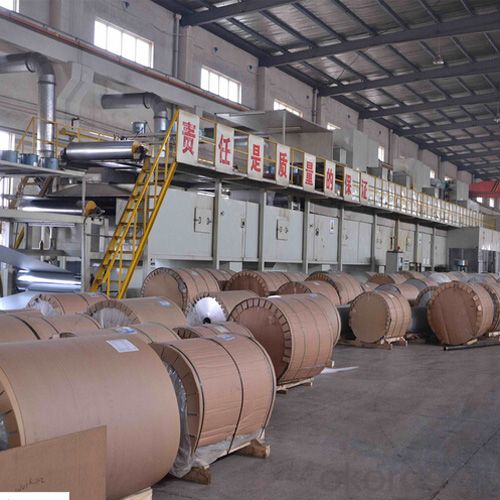
4. Aluminum Radiator Heating Fins Coil Specification:
Product | Code(typical examples) | Spec. mm | Main application | |
Fin stock H16&H14 | Bare fin stock | 3003+1.5%Zn,3003+1.5%Zn+Zr | Thickness: 0.05~0.35mm Width(min):10mm | Auto&Electric RAD. Fins |
Cladding fin stock | core:3003+1.5%Zn Cladding layer(2):4343 | |||
Tube Material (usually H16, H14&H26,H24) | Non-clad tube | 3003 | Thickness:0.2~0.5mm Width:26~200mm | Tube material applied in Auto thermal transfer parts |
Cladding tube material | core:3003 Layer 1(brazing layer):4343 Layer 2(water side):7072 | |||
Header plate,side plate (Temper-O ) | Cladding material | core:3003 Layer 1:4343 Layer 2:4343 | Thickness:1.0~2.5 Width:30~1400 Length:1000~6000 | Auto RAD. header&side platematerial |
Non-clad material | Non-clad 3003 | |||
Collecting tube material (H14 as usual) | core:3003 Cladding layer:4045(single side) | Thickness:1.0~2.0 | Collecting tube of Auto air- conditioner | |
Evaporator tube plate | core:3003 Cladding layer 1: 4343 Cladding layer 2: 4343 | Thickness:0.4~0.6 Width:30~1400 | Laminated evaporator | |
5.FAQ
Q1.How long have you been in this product?
A1:More than 10 years.
Q2. What's the minium quantity(MOQ)?
A2. 5 Metric tons
Q3. How long is shipping time?
A3. 7 (ready-made products)-25 days(OEM)
Q4. How do you guarantee the quality?
A4. 1. Cooperating and Exchaning experience with sevral quoted aluminum companies
2. Japanese and Swiss production line and skilled works (regular training and testing)
3. more than 10 years production experience.
Q5. Do you have after sale service?
A5. Yes. Any quality problem occurs within one year, pls take photoes,we will be responsible.
- Q: Is it possible to use a soldering iron to join aluminum coil with solder?
- <p>Traditional soldering irons are not suitable for soldering aluminum coils because aluminum does not readily bond with common solders used for irons. Aluminum has a high oxide layer that forms quickly, which prevents the solder from adhering. Specialized aluminum solder or fluxes are required for this task, and even then, the process might not be as effective as with other metals. For aluminum, brazing or welding techniques are often more appropriate.</p>
- Q: Why the aluminum-plastic panel?processed by color aluminum coil peel off paint?
- Generally speaking, aluminum-plastic panel will not peel off paint. If it does happen, the quality of the aluminum-plastic panel is very poor.
- Q: Can aluminum coils be used for signage and display applications?
- Signage and display applications can utilize aluminum coils effectively. Aluminum, being a versatile and lightweight material, finds extensive usage in the signage industry. The ability to easily shape and resize aluminum coils makes them suitable for various signage and display purposes. When it comes to outdoor signs, such as billboards, building signs, and traffic signs, aluminum coils are commonly employed due to their exceptional resistance to weather and durability. They can endure harsh weather conditions like rain, snow, and UV exposure without undergoing rusting or fading. This quality makes them a reliable option for signage with long-lasting effects. Moreover, aluminum coils can be coated with various finishes like paint or powder coating to enhance their appearance and provide added protection against corrosion. This enables customization and branding opportunities, making aluminum coils appropriate for both functional and decorative signage. Regarding display applications, aluminum coils can be utilized to create exhibition stands, trade show displays, retail displays, and other promotional materials. Their lightweight nature facilitates easy transport, assembly, and disassembly, making them advantageous for portable displays. Additionally, aluminum coils can be easily printed on or laminated, enabling the incorporation of graphics and visuals to capture attention and convey messages effectively. All in all, aluminum coils are a versatile and resilient material suitable for a wide array of signage and display applications. Their ability to withstand weather, customizable finishes, and lightweight properties contribute to their popularity in the industry.
- Q: Can aluminum coils be used for heat recovery systems?
- Yes, aluminum coils can be used for heat recovery systems. Aluminum is a highly conductive material that can effectively transfer heat, making it suitable for heat recovery applications. Its lightweight nature also allows for easy installation and maintenance of the system.
- Q: why is aluminum to the right side of the periodic table if it's a metal and why is it negatively charge if it's a mental. also if you combine it with like another metal will it be an ion since its positively charge or no because they are both metals
- Aluminum is not placed with the other metals such as transition metals or alkali metals because it is classified as a poor metal. Elemental aluminum, in it's pure form, is not an ion because it has no charge. If combined with another metal, the result will also be neutral if the metal aluminum was being combined with was neutral. Hydrogen won't have the same case because it is not a metal, it is a gas. The only reason it is in the same column as metals is because they all have 1 valence electron
- Q: Can aluminum coils be used in architectural mesh applications?
- Yes, aluminum coils can be used in architectural mesh applications. Aluminum is a versatile and lightweight material that is commonly used in construction and architectural projects. It offers numerous benefits for architectural mesh applications including high strength-to-weight ratio, corrosion resistance, and ease of installation. Aluminum coils can be formed and fabricated into various shapes and sizes to create intricate architectural mesh designs. The coils can be woven, welded, or expanded to create different patterns and textures, allowing for flexibility in design and customization. Architectural mesh applications using aluminum coils can be found in a wide range of structures such as facades, partitions, ceilings, sunscreens, and safety barriers. The mesh can provide aesthetic appeal, privacy, sun shading, ventilation, and even security. In addition to its aesthetic and functional qualities, aluminum is also a sustainable choice for architectural mesh applications. It is a highly recyclable material, and its lightweight nature reduces transportation and installation costs, making it an environmentally friendly option. Overall, aluminum coils are an excellent choice for architectural mesh applications due to their durability, versatility, and sustainability. Whether it is for commercial, residential, or public spaces, aluminum mesh can enhance the visual appeal and functionality of architectural designs.
- Q: Is it possible to utilize aluminum coil as a conductor for speaker wires?
- <p>While it is technically possible to use aluminum coil as speaker wire, it is not recommended. Aluminum has higher resistance and lower conductivity compared to copper, which is the standard material for speaker wires. This can result in signal loss and reduced sound quality. Copper is preferred due to its superior electrical conductivity, ensuring minimal signal degradation over distance. For optimal audio performance, it's best to use speaker wire made from high-quality copper or copper-clad aluminum.</p>
- Q: What is the typical lifespan of an aluminum coil?
- The typical lifespan of an aluminum coil can vary depending on various factors such as the quality of the coil, its usage, maintenance, and exposure to environmental conditions. However, on average, an aluminum coil can last anywhere from 20 to 30 years with proper care and maintenance.
- Q: Can aluminum coils be used in the production of solar reflectors?
- Certainly! Solar reflectors can utilize aluminum coils in their production. Due to its exceptional reflectivity and durability, aluminum is widely employed in the manufacturing of these reflectors. The coils can be manipulated and molded into the desired shape for the reflector, facilitating efficient sunlight reflection onto the solar panels. Furthermore, aluminum's lightweight nature simplifies its handling and installation in solar reflector systems.
- Q: What is the role of aluminum coils in the construction of railways?
- The construction of railways heavily relies on aluminum coils, which possess unique properties and advantages. These coils are widely utilized in the manufacturing of railway tracks and train cars. One of the primary functions of aluminum coils in railway construction is their contribution to lightweighting. Aluminum, being a lightweight material, is ideal for reducing the overall weight of railway components. This is significant because lighter trains and tracks require less energy for operation, leading to improved fuel efficiency and reduced operating costs. Additionally, the decreased weight of aluminum components allows for increased payload capacity, enabling trains to carry more passengers or freight. Another crucial role of aluminum coils lies in their corrosion resistance. Railways are exposed to various environmental conditions, such as moisture, salt, and extreme temperatures. Aluminum possesses excellent corrosion resistance properties, making it highly durable and long-lasting even in harsh environments. This diminishes maintenance and replacement costs associated with rust and corrosion, ensuring the longevity and reliability of the railway infrastructure. Furthermore, aluminum coils offer excellent conductivity, which is essential for electrical and signaling systems in railways. Aluminum's high electrical conductivity facilitates efficient power transmission and distribution, enabling seamless communication between trains, signaling devices, and control systems. This contributes to the safety and efficiency of railway operations. Moreover, aluminum coils can be easily formed and fabricated into various shapes, providing flexibility in railway design and construction. This versatility allows for the production of customized railway components, such as curved tracks or aerodynamic train carriages, to meet specific project requirements. In conclusion, the indispensable role of aluminum coils in railway construction is attributed to their lightweight, corrosion-resistant, conductive, and versatile nature. Their incorporation into railway infrastructure results in various benefits, including enhanced fuel efficiency, reduced maintenance costs, improved safety, and the ability to design and construct innovative railway systems.
Send your message to us
Rheem Aluminum Coils - Aluminum Radiator Heating Fins Coil with Best Price
- Loading Port:
- Shanghai
- Payment Terms:
- TT OR LC
- Min Order Qty:
- 5 m.t.
- Supply Capability:
- 10000 m.t./month
OKorder Service Pledge
OKorder Financial Service
Similar products
Hot products
Hot Searches
Related keywords





